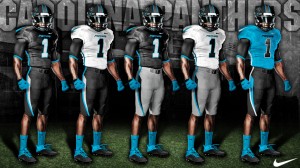Reading Lauren Chimko’s blog about the dangers of sugar filled soda reminded me of the controversy surrounding Coke’s product Vitaminwater. This product became the focus of a lawsuit over a year ago between the Center for Science in Public Interest (CSPI) and Coke. CSPI argued that Coke was using misleading advertising in promoting its hot new product which it acquired in a $4.2 billion take over of Glaceau. The beverages contain around 33 grams of sugar, similar to a can of soda. They argued that Coke advertised Vitaminwater as a health product and misled consumers into believing it was a healthy alternative to soda. This positioning made sense from Coke’s point of view, as they could attract a growing segment who was young and valued a healthy lifestyle. This new product line allowed them to capture a larger market while not cannibalizing their existing market for Coca Cola. A U.S. District Court ended up siding with the CSPI, stating that Coke did misled consumers about the benefits of their product.
I am personally split on this issue. While I do believe Coke targeted their product toward a health concious consumer possibly in a way that exaggerated the benefits, I don’t completely agree with CSPI’s allegations that Vitaminwater is equally as unhealthy as soda and I believe Vitaminwater probably is a better alternative than soda. While I don’t believe Vitaminwater is necessarily healthfood, and there is a substantial amount of sugar, the portion size is quite a bit larger than a can of coke which may help dieters overcome heavy use of soda as there is less sugar/volume. I believe this case also should be compared to the amount of unregulated claims that health supplement companies are permitted to make. This misleading advertising is especially prevalent in the weightlifting supplement market where manufacturers make outlandish claims which they legally do not have to prove and only have to include a tiny disclaimer anywhere on the packaging. While I believe some of these advertising techniques used by both supplement companies and Coke might be questionable, as a consumer you should feel a sense of responsibility towards yourself to ensure you know what you put into your body. This also touches on keeping a healthy sense of skepticism for advertising and remembering the advertisers’ one goal – to sell.



